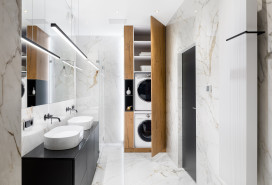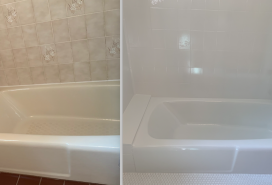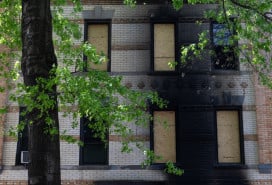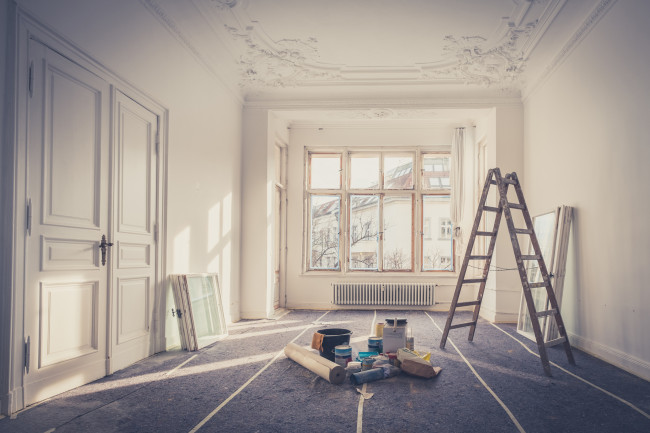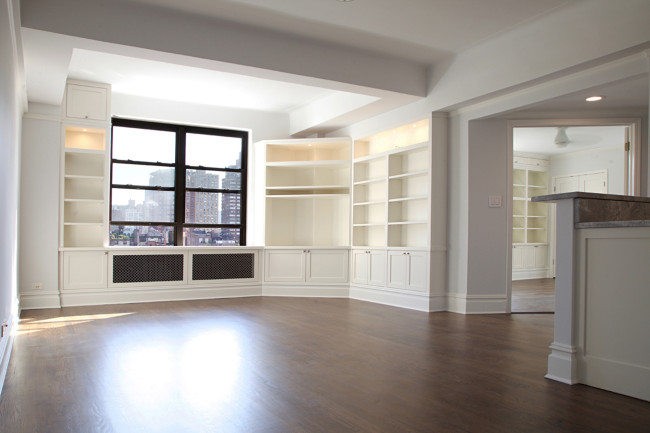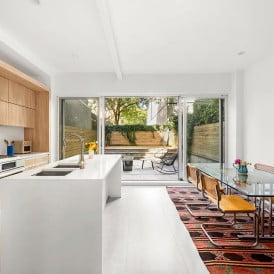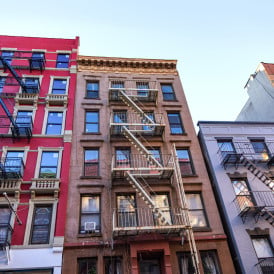I want to upgrade the HVAC in my apartment. What do I need to know?
With summer approaching, many New Yorkers are likely dreading the hassle of reinstalling their window air conditioning units, which can be both clunky and energy inefficient. Updating your apartment’s HVAC system could be a worthwhile renovation, one that will mean more comfortable temperatures indoors and more efficient, quieter cooling systems.
But there are numerous factors to consider before you take this step, including your building’s policies, its electrical capacity, your product options, and of course, cost.
It’s also important to understand what HVAC entails.
“The term HVAC stands for heating, ventilation, and air conditioning,” explains Agustin Ayuso, a Bolster architect. Bolster is a New York City company that empowers homeowners to control their major renovation by delivering industry-leading expertise and a radically transparent online platform, and the team has tremendous experience with the complexities of HVAC.
“When homeowners mention HVAC, what they really mean is they want to upgrade the air conditioning and heating in their apartments.”
Upgrading your HVAC could mean replacing window units with more permanent wall-through units, or installing central air and heat.
“It’s essential to work with an experienced professional who understands the unique needs and concerns of New York City homeowners,” says Fraser Patterson, founder and CEO of Bolster. “Our team will not only help you select the HVAC system that’s right for your home and lifestyle, they’ll also make sure your project is delivered risk-free, on time and on budget.”
Spend less, build faster with Bolster. "We deliver risk-free, on-time, on-budget renovations," says Bolster's CEO and co-founder Anna Karp. "We give you a fixed-priced cost up front, and absorb all unforeseen project costs after the demolition phase. Bolster--not you--is responsible for any and all surprises." Ready to start your renovation? Learn more >>
What to consider before you upgrade
“You should start by approaching your building,” Agustin says. “Look around and see what other people have done.”
The type of building you live in will determine what kind of HVAC upgrades you can do, and you may face restrictions depending on its age, landmark status, and board rules. Some factors to consider:
Electrical capacity
“Older buildings often have antiquated systems, to the point that you can barely put in newer appliances like washers and dryers,” Agustin says.
For homeowners in such buildings, he suggests having an electrician review the amount of power you have, to see whether there’s enough electrical capacity to install a more sophisticated HVAC system.
If not, you may want to petition your board. Some older buildings in New York have opted to invest in system-wide upgrades after requests from residents. These updates can mean an expensive assessment, but for some homeowners it’s worth it.
“The building might bring everyone up to 150 to 200 amps, for example, and then get extra power from Con Ed, which can be costly,” Agustin says. “They’ll run wires to each apartment, so the power is there when owners want to upgrade, or they’ll just upgrade the electrical room in the basement.”
In newer properties with better electrical loads, you’ll still need to get approval, so be prepared to share specifics about your plans with management.
Landmark status
Generally, the boards of landmarked buildings will let you install HVAC upgrades, as long as your new system won’t interfere with any historical details.
For wall-mounted air conditioning units, for example, a landmarked building will have guidelines dictating placement. Homeowners need to apply to the Landmarks Preservation Commission, which will evaluate the proposed upgrades to ensure that the proposed work will preserve the visual and historical integrity of the building. (Learn more about the LPC’s guidelines and procedures here.)
“Buildings want your work to be consistent with the other units that are already installed,” Agustin says. “And even if they aren’t landmarked, most buildings have rules that conform to those of landmarks. They just want consistency, so people don’t put ACs wherever they want, and the whole façade turns into a mismatch.”
Ceiling height
Depending on the system you plan to install, you may lose some ceiling height. Upgrading to central air and heat, for instance, often means the addition of ductwork that allows cool or warm air to circulate through your apartment.
“This requires dropping the ceiling,” Agustin says. “We try to minimize that by dropping it in the hallways and running the ductwork around the perimeter of the room, so that you don’t end up dropping the ceilings in your main living space.”
If you hate the idea of losing height in your apartment, you might consider a ductless system, which typically means perimeter or wall-mounted units rather than central air.
Wet over dry
Wet over dry means construction that places kitchens or bathrooms over bedrooms or living rooms in the apartment below; it can also apply to the installation new HVAC systems.
“All AC systems generate condensation. One reason a lot of buildings don’t like central air is because it’s put in places where there wasn’t water before, like closets, dining rooms, and bedrooms,” Agustin says.
This is another area in which you’ll need to consult with your building management to be sure you minimize the potential for water damage.
“Buildings have engineers they hire to advise them on whether this could cause a leak down the road,” Agustin says. “You have to be very careful that you follow safety guidelines, or they just won’t let you put the HVAC system in.”
You Might Also Like
Choosing the right system for you
Through-wall air conditioning units are an improvement over window-mounted ones, in that they prevent less loss of cool air through small cracks between the unit and the window, as well as offer other conveniences.
“They can be connected to steam heat and provide you with heat in the winter and AC in the summer,” Agustin says. “They can also be connected to WiFi thermostats that you control remotely from smartphone apps.”
Keep in mind that even though these systems require less renovation work than central air, you’ll still have to do some masonry to install them; not all HVAC companies will handle masonry, so you may need to hire a contractor or architect for this.
“The next step up is central air, which is one system for the entire apartment,” Agustin says. “For that, you get into a whole set of different options depending on your budget.”
One of the most popular options today, he says, is the VRV system, which has smart computing that determines how much cool air to send through the apartment; each room is treated as an independent zone, which means greater energy efficiency.
This system is one of the most expensive, though, since each room needs its own air handler unit. Another downside is that such a system comes with exterior units that must be installed on a roof or exterior wall, which can be challenging in properties that aren’t townhouses.
Another factor to consider when selecting a system is energy efficiency. “The most compact system is not necessarily the most energy efficient,” Agustin says.
Furthermore, in 2016 New York City updated its energy conservation code, which delineates the kinds of HVAC systems residents can install.
“There are a lot of systems on the market that won’t pass code,” Agustin says. “The only way you can make it work is if your building is exempt because it’s historic.”
Finally, consider how you would feel about the occasional need for repairs for your system. With multiple through-wall units, if one breaks down, you can simply close off that room and use the others, Agustin points out. But if you have central air and the unit needs servicing, you’ll have to wait until a repair person can fix it until you get relief from extreme temperatures.
When to update HVAC
If upgrading your HVAC system is your priority, you may want to take it on as a standalone project. But crunch the numbers first, because it may be most cost-efficient to update your HVAC as part of a larger renovation.
“A lot of the costs of installing central air come from the costs associated with the installation: Running piping, installing units, dropping ceilings, repainting,” Agustin says. “HVAC installation companies are good at putting in ductwork and installing the system, but they won’t do masonry, electrical, concealment of the units, painting, and all the permit filings.”
For these other aspects of the job, you’ll need to work with a general contractor or architect.
“A $50,000 HVAC system could end up costing three times as much after paying an architect or contractor,” Agustin points out.
Given the expense, it may make more sense to fold an HVAC update into a larger project. On a major renovation that already involves work on ceilings and walls, it may be easier and more cost-effective to include HVAC installation.
Hiring an architect is helpful in navigating these kinds of decisions. “Mechanical engineers are good at selecting the system, but architects can help explain what the system will do and how it works,” Agustin says. “We play psychologist a little bit.”
Being a psychologist, however, is just one part of the larger Bolster ethos.
“We’re often in an educational role where we guide the homeowner in making smarter decisions based on their budget and lifestyle, and we manage the risk involved in embarking on major home renovations,” says Fraser. “That means we do our due diligence and submit plans after having probed for the best possible solution in systems like HVAC installation, and we know when these major system upgrades do or do not make sense. Throughout the entire process, however, we work to create efficiencies in cost-sharing and procurement, which ensures all Bolster projects are delivered beautifully, on-time, and on-budget. This means homeowners always know they’re in smarter hands when working with our team."
Every year, New Yorkers waste over $700M following the usual renovation process.
Bolster has uncovered the drivers behind these inefficiencies and has developed a proprietary solution that applies to every home renovation project. Bolster is the first company to bring radical transparency, analytics, and accountability to the entire process. They promise that every project is thoughtfully designed and beautifully delivered for a fair price, on time, and on budget. To start your major home renovation project, visit bolster.us













